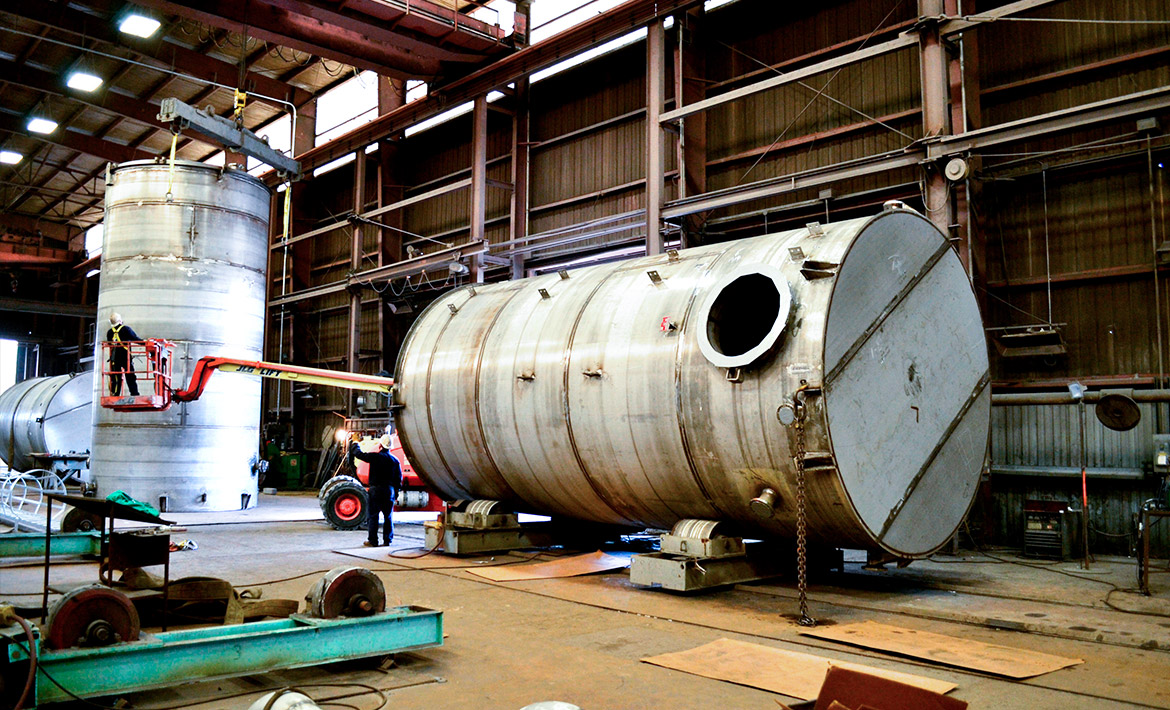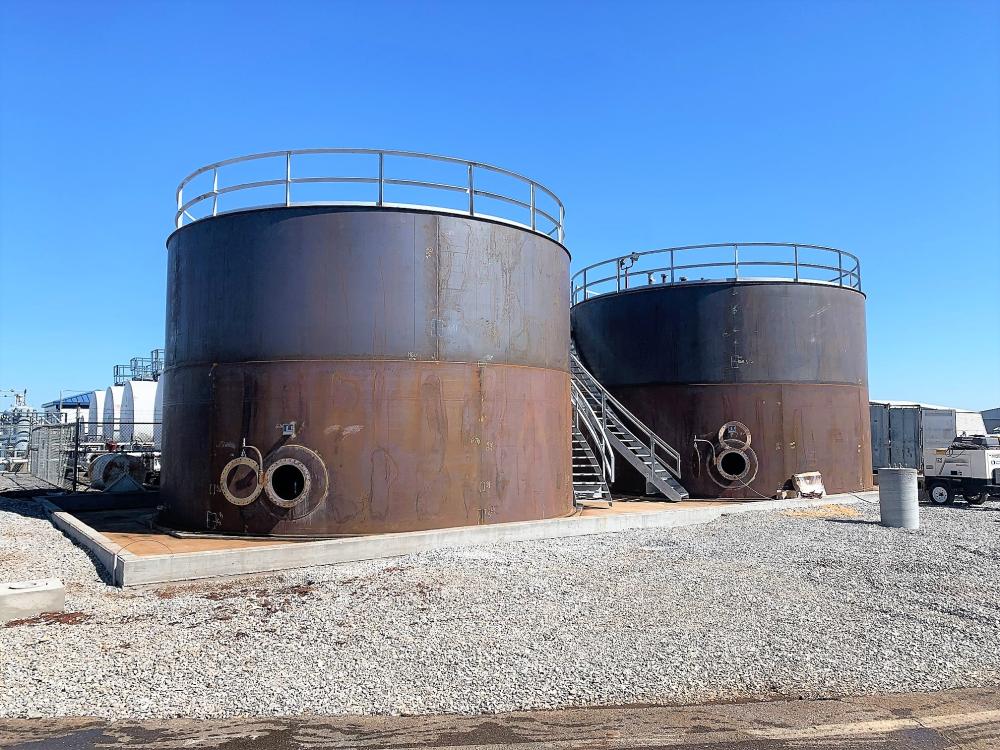A Step-by-Step Look at the Setup Process of Welding Inspection Techniques
Welding assessment is an important procedure that ensures architectural integrity and security. The setup of assessment techniques involves numerous organized actions, each important to accomplishing trustworthy outcomes. From preparation and device selection to conducting visual and non-destructive examinations, each stage demands careful attention. Comprehending these procedures can significantly enhance quality control in welding tasks. What challenges emerge in applying these strategies, and how can they be successfully dealt with?
Recognizing the Importance of Welding Assessment
Welding examination is an important component of ensuring structural stability and security in building and construction and production procedures. This method entails assessing welded joints for flaws, ensuring that they satisfy certain standards and laws. By systematically evaluating weld quality, inspectors can identify concerns such as cracks, gaps, and insufficient blend, which can jeopardize the stamina and resilience of frameworks.
The significance of welding assessment expands beyond prompt safety problems; it helps stop expensive failings and potential risks in the long-term. Efficient examination techniques foster compliance with market criteria, thus boosting the total dependability of welded components. On top of that, a durable examination process adds to preserving the track record of home builders and producers, as it guarantees clients of the quality of their projects. Inevitably, recognizing the significance of welding evaluation is essential for promoting risk-free construction methods and making certain the longevity of crucial infrastructure and products.
Picking the Right Devices for Examination
When picking the suitable devices for assessment, it is vital to ponder the particular needs of the welding procedure and the products entailed. Different examination methods, such as aesthetic, ultrasonic, and radiographic testing, necessitate unique tools tailored to their one-of-a-kind demands. For aesthetic inspections, tools like magnifying calipers and glasses are important for assessing weld high quality. Ultrasonic screening needs specialized devices efficient in sending and obtaining acoustic waves to spot internal problems. Radiographic screening, on the various other hand, uses X-ray or gamma-ray sources together with sensitive film or electronic detectors to reveal inconsistencies.
In addition, individual safety equipment (PPE) is vital to assure the safety and security of assessors during examinations. Picking the right devices not only enhances the accuracy of inspections but also contributes to the general stability and safety and security of the welding project. Consequently, a thorough understanding of available tools and their applications is imperative for effective welding inspection.
Getting ready for the Examination Process
Before starting the evaluation procedure, it is important to establish an extensive strategy that describes the extent and goals of the examination. This strategy ought to include certain criteria that define what comprises appropriate top quality in the welding work being inspected. Identifying the relevant codes and requirements is important, as they will assist the evaluation criteria and techniques.
Additionally, employees included in the assessment should be properly educated and accredited in welding evaluation strategies to assure integrity and accuracy. A list can be useful in organizing the various facets of the assessment, ranging from equipment readiness to environmental conditions that can impact the evaluation.

Finally, logistical considerations such as organizing, offered sources, and communication in between employee ought to be dealt with. By preparing systematically, assessors can enhance the efficiency of the evaluation and make sure that all essential aspects are properly taken into consideration before continuing with the evaluation itself.
Carrying Out Aesthetic Assessments

Performing visual examinations is an essential step in the welding evaluation procedure, needing cautious preparation to ensure effective examination. Inspectors need to recognize with key issue signs that can indicate possible issues in weld quality. By concentrating on these elements, one can enhance the general integrity of the inspection outcomes.
Planning For Visual Evaluation
Visual evaluation works as an essential primary step in the welding examination procedure, assuring that any possible issues are identified early (API 650 Welding Inspection). Correct prep work is crucial for reliable aesthetic inspection. Examiners must start by assessing appropriate paperwork, consisting of welding procedures and specs, to understand the project requirements. They have to gather necessary tools, such as magnifying glasses, flashlights, and suitable personal safety tools (PPE) An extensive exam of the assessment area is essential; assessors Clicking Here need to verify it is complimentary and clean of obstructions. In addition, it is vital to establish excellent lights problems to boost presence of welds. By taking these preparatory actions, examiners can develop an environment for recognizing disparities and assuring the honesty of the bonded frameworks
Key Problem Indicators
A thorough understanding of vital issue signs is important throughout aesthetic assessments to assure the quality and security of welded joints. Assessors should focus on details indications such as cracks, porosity, undercuts, and insufficient combination. Fractures may look like sharp lines and can jeopardize architectural integrity. Porosity shows up as little holes that can compromise weld toughness. Undercuts, which are grooves along the weld side, can bring about tension focus. Incomplete fusion shows that the weld steel did not properly bond with the base product, leading to a weak joint. By methodically determining these defects, examiners can determine compliance with sector requirements and boost the total reliability of bonded structures, eventually adding to safer functional conditions.
Applying Non-Destructive Testing Strategies

Numerous non-destructive testing (NDT) methods are indispensable to assuring the integrity of welded frameworks without jeopardizing their functionality. These techniques permit assessors to examine weld high quality and identify issues without causing damages to the materials being checked. Common NDT strategies include ultrasonic screening, radiographic screening, magnetic particle testing, and dye penetrant testing. Each approach serves a certain purpose, addressing different kinds of problems such as splits, porosity, or insufficient combination.
Applying NDT methods requires an organized strategy, beginning with picking the suitable approach based on the products and the nature of the weld. Educating employees in these strategies is vital for precise results. Additionally, establishing clear procedures and standards assurances consistency throughout the inspection process. By integrating NDT right into the welding assessment operations, organizations can enhance the dependability of their products while decreasing possible threats related to structural failings. This positive strategy inevitably adds to preserving safety and top quality criteria in bonded building and constructions.
Examining and recording Evaluation Results
Reliable paperwork and analysis of evaluation outcomes are crucial parts of the welding evaluation process. Exact documents of evaluation findings function as a recommendation for quality control and conformity with industry standards. API 650 Welding Inspection. Assessors must use digital systems or structured forms to log details such as the kind of weld, evaluation techniques utilized, and any discrepancies recognized throughout the evaluation
Once information is gathered, complete analysis is essential. This includes comparing results versus developed requirements to identify fads or recurring concerns. Statistical devices might be utilized to quantify defects and evaluate their impact on overall weld quality.
Furthermore, reliable communication of findings to pertinent stakeholders is imperative. Recaps and records should be clear and concise, highlighting key understandings and recommendations for rehabilitative actions. By methodically evaluating and recording evaluation results, organizations can foster constant improvement in welding techniques and boost item honesty.
Frequently Asked Concerns
What Certifications Are Needed to Come To Be a Welding Inspector?
To come to be a welding examiner, one commonly needs relevant accreditations such as AWS CWI, together with experience in welding methods, knowledge of welding codes, and effectiveness in examination techniques to guarantee high quality and safety standards.
Exactly How Frequently Should Welding Inspections Be Conducted?
Welding examinations must be performed frequently, normally after each weld is finished, and regularly throughout jobs. find out Aspects such as job intricacy, sector criteria, and governing requirements can influence the regularity of these assessments.
What Is the Expense of Welding Assessment Providers?
The cost of welding evaluation solutions differs substantially based upon elements such as project complexity, area, and dimension. Usually, costs range from $100 to $150 per hour, with additional charges for specialized testing and qualifications.
Are There Certifications for Welding Inspectors?
Yes, there are numerous qualifications for welding examiners, including try this site those provided by the American Welding Society (AWS) and the International Institute of Welding (IIW) These qualifications assure examiners have the essential abilities and understanding for reliable evaluations.

How Do I Choose an Examination Company?
To select an inspection provider, one should evaluate qualifications, experience, sector reputation, and customer testimonials. Furthermore, contrasting service offerings and pricing can assist ensure the chosen company fulfills specific project needs successfully.
Furthermore, personnel involved in the evaluation should be effectively educated and certified in welding inspection methods to assure dependability and precision. Performing visual evaluations is a crucial action in the welding examination procedure, requiring careful prep work to ensure efficient assessment. Visual examination serves as a crucial very first action in the welding evaluation process, ensuring that any kind of prospective flaws are determined early. Effective paperwork and evaluation of inspection results are vital elements of the welding assessment process. Welding evaluations must be performed consistently, usually after each weld is completed, and occasionally during projects.